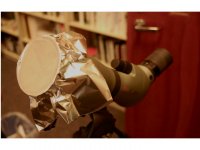Spotting scope test
Dear all,
Through circumstances beyond my control I could not replye earlier to different threads, so I will combine them here:
Dear Henry:
I posted the report on the WEB-site of Peter Abrahams, since the time they were finished coincided with the meeting of the Binocular History Society in Vancouver in 2010. It may be good to post the test also on Birdforum.
Dear John Russell,
I read that you want to teach me a lesson, since you have read somewhere in my treads that I wrote a disparaging response. Since I do not have a clue where you are referring to I can not respond.
With regard to the system of evaluation of the telescopes by ranking them: of course one can make objections to that method. We discussed with birders quite frequently what system would be helpful. This system I used in the test looked in so far useful that we noticed that persons who want to buy a telescope very frequently put different telescopes next to each other for comparison. And the ranking system is based on that way of decision making, but yes, there are of course also other ways to give points to telscope performances.
The ski goggles item: I used a telescope in the mountains covered with snow in sunlight and I had ski goggles on my head. It was then that I noticed that the telescope I was using at that time was not suited for observations with ski goggles. Not many persons will use ski goggles, I know, but if you do..
As far as the fast coupling of a tripod platform is concerned: that certainly is important for many birders in Holland and, yes, there are differences in user comfort of different fast coupling systems, but I did not make that an item in the test. With regard to your worries about my experience with telescopes: it is roughly 50 years or more that I am a frequent user of binoculars and telescopes and I think that I did learn something during these years.
Dear Hinnark,
Thank you for your compliments about the test.
Dear Mariusz,
You raise a good point about telescope resolution. That is not incuded in the test. What we did was: the telescopes investigated were aimed at a test chart under high light conditions and with the eye we could not see differences in resolution between the telescopes. I think that with laboratory measurements differences can be found.





